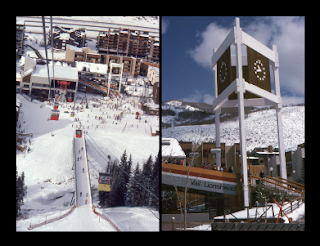Two worlds is a common pattern in initiations and other ritual processes. The initiate enters the process from his/her ordinary world of day to day living amidst the passage of time. The ritual space suspends the passage of time and ordinary events. What happens seems out of this world, impossible to predict and difficult to explain. The events seem extremely symbolic and larger than life. At the closure of the ritual process, the initiate returns to the ordinary world transformed in identity, outlook and sense of purpose. The ordinary world remains the same but being in it has been changed.
Two worlds is also a common pattern in a hero's journey that Joseph Campbell popularized. A heroic myth, fairy tale or story begins in a declining world of a fallen king, wicked stepmother, prolonged drought or some other persistent misery. The heroic character seeks an elixir to end this misery in his/her homeland. It becomes necessary to find a way out of this world which leads the heroic character to a threshold between two worlds guarded against casual entry. If the hero passes the tests of the threshold guardian, the quest continues in the extraordinary world of other-worldly powers, confrontations, challenges and conquests. At the end of the story, the hero returns to the ordinary world with the elixir which brings an end to the persistent misery.
In presentations, we can also portray two worlds by changing approaches midstream. After a sequence of covering straightforward content, we could switch to open-ended processes like:
- reflecting on images with no captions or other text
- pondering what-if possibilities with only the question on the screen
- exploring a visual metaphor for different ways to define a problem, to think about functionality or realize combinations of solutions
- showing the previous sequence upside down and backwards to break up preconceptions about right answers and requirements
- doodling on a projected whiteboard about better questions to be asking or different ways to be seeing situations
- telling a story with images that sends a message to be more playful, open-minded or exploratory
- combining to scenarios into one that contains the visual elements from both in new contexts, uses or frames
Okay, it's time to go back to formulating presentations which portray only one world. Thanks for taking this journey with me as you read this.




